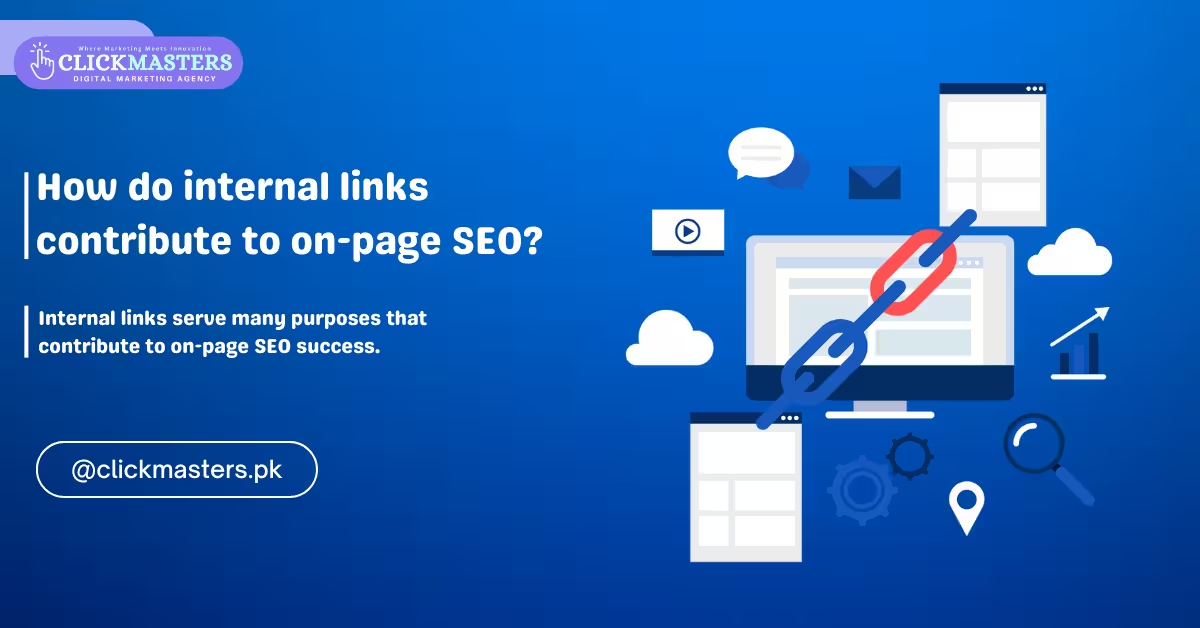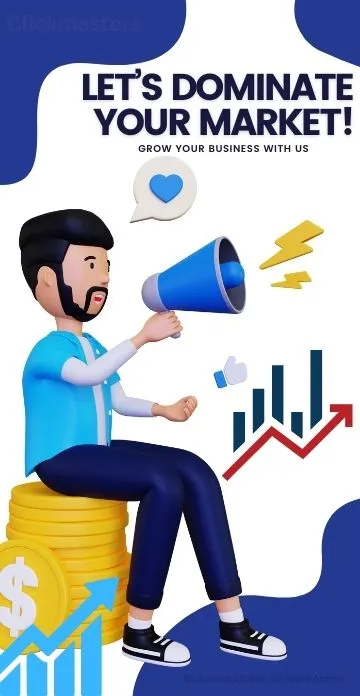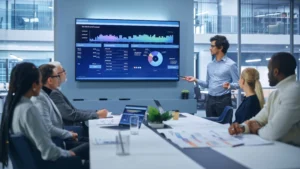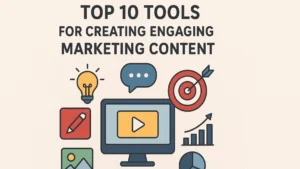Internal links are a part of on-page SEO because they help users and search engines navigate your site.
They connect pages within the same site, so search engines like Google can understand the relationship between your content.
By linking to key pages, you can distribute authority across your site, which will help boost rankings for those pages.
For users, internal links make it easier to find related content, improve their experience, and keep them on your site longer.
This also reduces bounce rates which can further improve your SEO.
In short, internal links are a big part of website structure, user engagement, and page visibility in search engines, so they are a key part of on-page SEO.
Introduction to Internal Links in SEO
Internal links connect one page of your website to another page on the same site.
They’re helpful not only for guiding visitors through your content but also for SEO.
1. A brief overview of internal links and their role in SEO.
For SEO, internal links help search engines like Google understand the structure of your website.
When search engines crawl your site, they use these links to find and index new pages.
Internal links also distribute “link equity” (also known as “link juice”) across your site, which can help boost your page rankings.
How Internal Links Improve Website Structure
Internal linking is key to the structure of your website.
You create a network that helps organize your content by linking related pages.
This benefits both search engines and users and improves the overall experience.
1. Creating a Hierarchy of Content
One of the biggest benefits of internal linking is that it allows you to create a content hierarchy on your site.
So you can identify your most important pages and link to them from various places around your website.
For example, your homepage can link to main category pages, which can then link to sub-category pages.
This helps search engines prioritize the most important content and get it indexed and ranked.
And users to understand the content flow and get to the good stuff.
2. Improving Navigation for Users and Search Engines
Internal links also enhance navigation by making it easier for users to find what they want.
When you provide links to related articles or pages, users can quickly explore your site without feeling lost.
Internal links also help with navigation so users can find what they want.
Users don’t get lost when you link to related articles or pages.
Boosting Page Authority with Internal Links
This keeps users engaged and they’ll spend more time on your site. For search engines, internal links help with crawling and indexing your pages.
They can follow these links, discover new content, and see how your site’s pieces fit together, which helps your overall SEO.
Internal links power up your pages. Use them wisely, and your site will be more credible to search engines, which means better rankings and more visibility.
1. Distributing Link Equity Across Pages
One of the main jobs of internal links is to distribute link equity, or “link juice,” across your website.
When one of your pages gets a link from an external site, it gains authority.
By linking to other pages on your site from that authoritative page, you can pass some of that link equity to those linked pages.
This distribution ensures all your important content has a fair chance to rank.
Essentially, internal links are used to pass value from one page to another and help less authoritative pages get noticed.
2. Enhancing Page Rankings Through Strategic Linking
Linking strategically is key to ranking better. By choosing which pages to link and how to link them, you can guide the search engines to your best content.
For example, if you have a high-ranking blog post, linking to newer or less visible pages can send traffic and authority to those pages.
Also, using relevant anchor text in your internal links gives users and search engines context about the linked content and increases the chances of better rankings.
This helps your content get more visibility and creates an adhesive user experience.
Improving User Experience and Engagement
Internal links improve the user experience and engagement of your website.
Providing a clear path to related content makes the experience more enjoyable and informative for your visitors.
Users who find related articles and information easily will stay on your site longer.
1. Guiding Users to Relevant Content
One of the main jobs of internal links is to guide users to related content.
When a user reads an article and sees links to related topics they can quickly find more information that interests them.
This helps them find what they want and stay on your site.
By curating a selection of internal links that link to similar or related articles, you create a resource that encourages exploration and learning.
This tailored navigation helps them understand the topic better and builds trust with your audience.
2. Reducing Bounce Rates and Increasing Session Duration
Internal links also help reduce bounce rates and increase session duration.
A bounce is when a user visits a page and leaves without exploring further.
By placing internal links within your content, you can encourage users to click through to other pages and reduce the bounce.
When users stay on your site longer, it tells search engines your content is engaging and relevant, which can help with rankings.
A well-structured internal linking strategy improves user experience and SEO performance.
Best Practices for Using Internal Links in SEO
You need to follow best practices to get the most out of internal linking for SEO.
Properly using internal linking can improve your website structure, user experience, and search engine rankings. Here are some key points to remember.
1. Optimizing Anchor Text for SEO
Optimizing your anchor text is one of the most important aspects of internal linking.
Anchor text is the clickable text in a link that gives context to both users and search engines about the linked page.
Using descriptive anchor text helps search engines understand what’s on the linked page so it can rank higher.
Instead of generic phrases like “click here,” use specific phrases like “learn more about SEO.”
This tells the user what to expect and reinforces keyword relevance and your overall SEO strategy.
2. Avoiding Overuse or Irrelevant Linking
Internal linking is good, but overlinking or linking to irrelevant content can harm your SEO.
You need to find a balance in your linking strategy. Too many links on a page can overwhelm users and dilute the value of each link.
Instead, focus on a few relevant internal links that add to the content and give value to your readers.
And make sure the pages you link to are relevant to the topic.
Irrelevant linking can confuse users, lead to a poor user experience, and ultimately harm your site’s credibility and SEO.
Conclusion: The Role of Internal Links in SEO Strategy
In short, internal links are a key part of any SEO strategy. They help with site structure and navigation, user experience, and engagement.
By linking to related content, you’re guiding users to more information and keeping them on your site longer.
This, in turn, reduces bounce rates and increases the chances of higher rankings in search results.
1. Summing Up the Importance of Internal Links for On-Page SEO Success
Internal links serve many purposes that contribute to on-page SEO success.
They distribute link equity across your site and boost page authority.
Properly optimized anchor text gives context to search engines so they can understand the relevance of the linked content.
By following best practices, not over-linking, and being relevant, you strengthen the overall quality of your site.
Ultimately, a well-thought-out internal linking strategy makes your site more usable and plays a big part in your search engine visibility.
So, by highlighting the importance of internal links in your SEO efforts, you’ll get better results and achieve your digital marketing goals.








